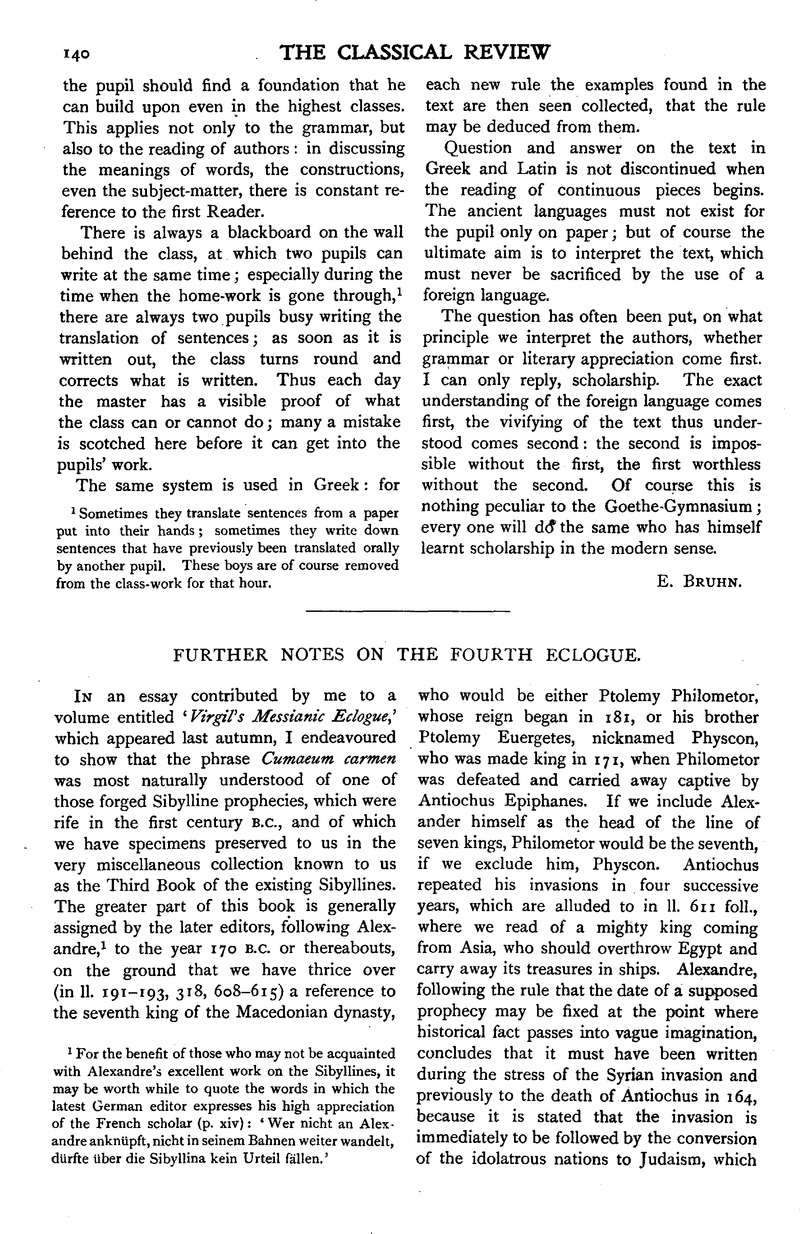No CrossRef data available.
Published online by Cambridge University Press: 27 October 2009

page 140 note 1 For the benefit of those who may not be acquainted with Alexandre's excellent work on the Sibyllines, it may be worth while to quote the words in which the latest German editor expresses his high appreciation of the French scholar (p. xiv): ‘ Wer nicht an Alexandre anknüpft, nicht in seinem Bahnen weiter wandelt, dürfte über die Sibyllina kein Urteil fällen.’
page 142 note 1 I see no reason for doubting this statement of Epiphanius. He had no motive for imputing such an interpretation to the Herodians, and, however lightly we may esteem his judgment and reasoning powers, we are certainly indebted to him for much valuable information.
page 142 note 1 Attention was first called to the connexion between Herod and the two Pollios, as bearing on the interpretation of the Fourth Eclogue, by MrGarrod, H. W. in his very interesting note in the Classical Review for Feb. 1905, p. 37 f., which I grieve to have overlooked in writing my own essay.Google Scholar
page 142 note 2 See Jewish Encyclopaedia under this name.
page 142 note 3 This was a common custom with the princes of the Herodian house, as in the case of Herod's other sons, Philip, Archelaus, and Antipas (Ant. xvii. 1. 3), of Herod Agrippa I. with his two brothers Aristobulus and Herod of Chalcis, grandsons, and Herod Agrippa II. great grandson, of Herod the Great.
page 143 note 1 The date of this mission to Rome is a little doubtful. MrGarrod, puts it ‘about the year 24 B.C. or possibly 27 B.C.’ Schürer, Jewish People (Eng. tr. vol. i. p. 408)Google Scholar assigns it to 23 B.C. and has a note discussing the date of the building of Samaria in pp. 405 f. I think Schürer's date agrees better with the probable age of the children. The marriage of Mariamne took place in 37 B.C. and she was put to death in 29 B.C., when her two eldest sons would probably have passed their sixth birthday. They would thus have completed their twelfth year (when a Jewish youth became ‘son of the Torah,’ corresponding to our coming of age) in 23 B.C., and be about the age of seventeen or eighteen at the time of their return home, after they had completed their education (Ant. xvi. 1. 2).
page 143 note 1 Since this was written Mr. Raper has stated his view more fully in the February number of the Classical Review.
page 144 note 1 Mr. Warde Fowler compares Liv. v. 54, where Camillus, arguing against the removal to Veii, praises Rome as ‘regionum Italiae medium, ad incrementum urbis natum unice locum.’